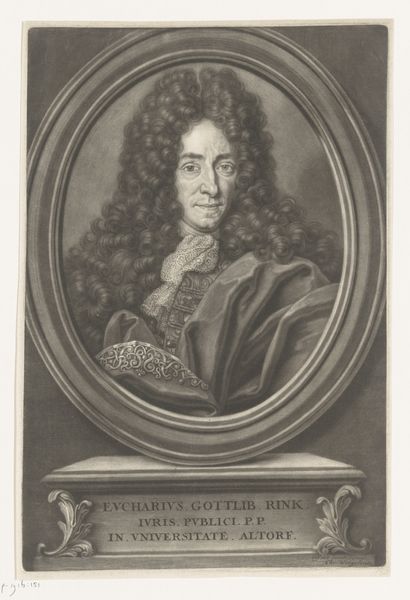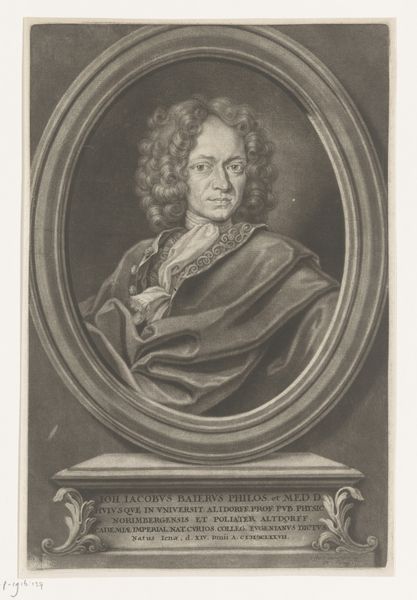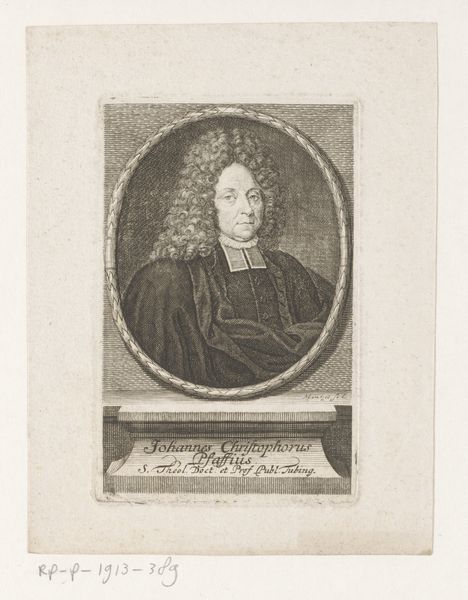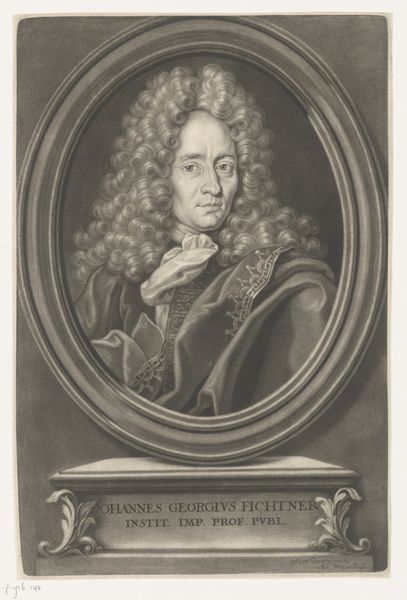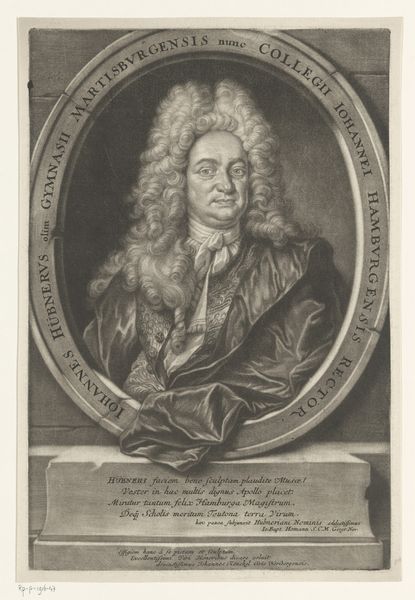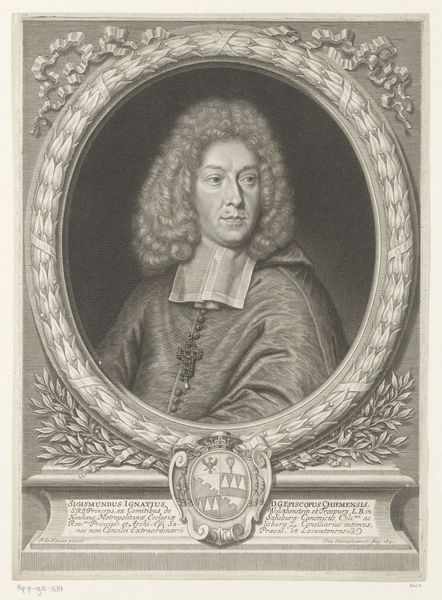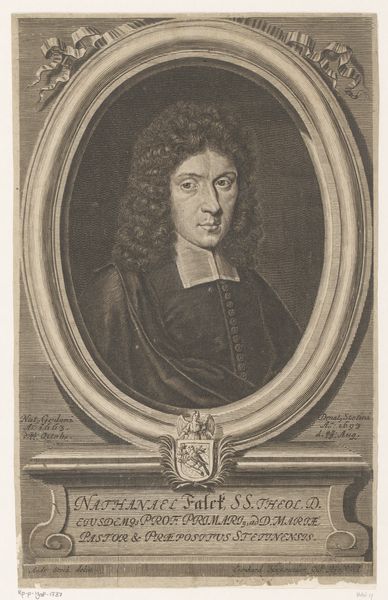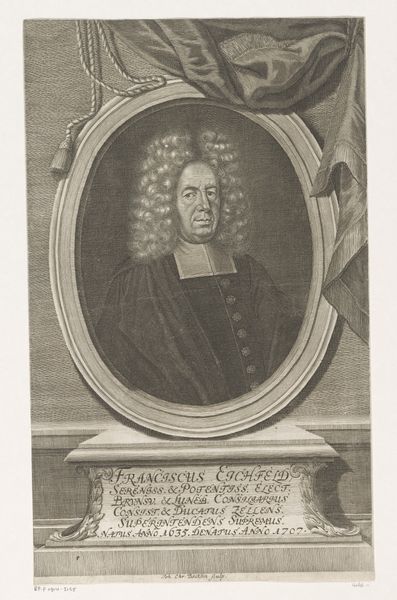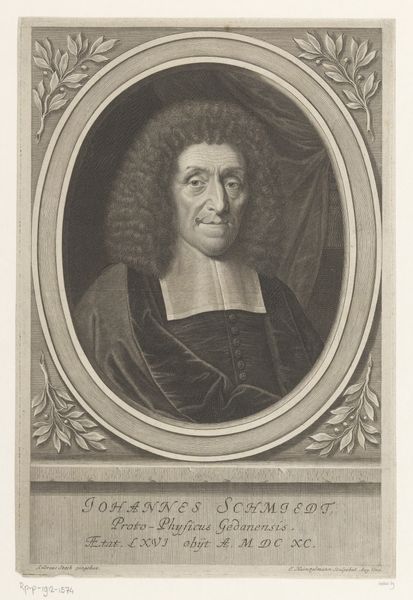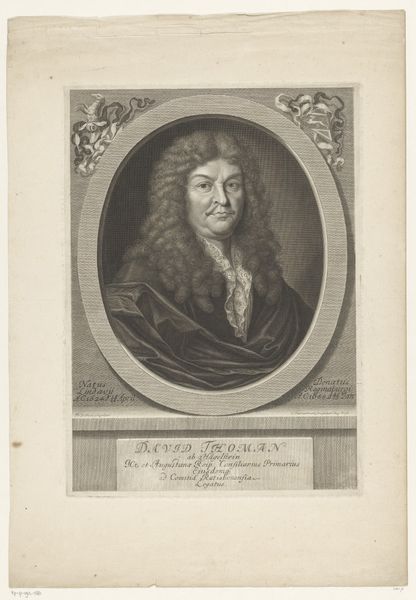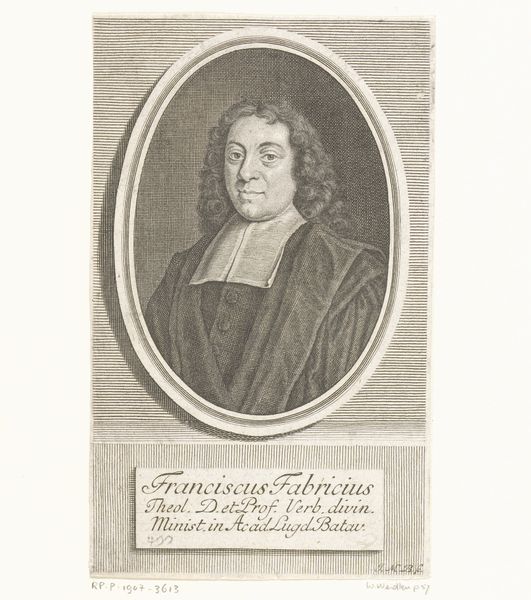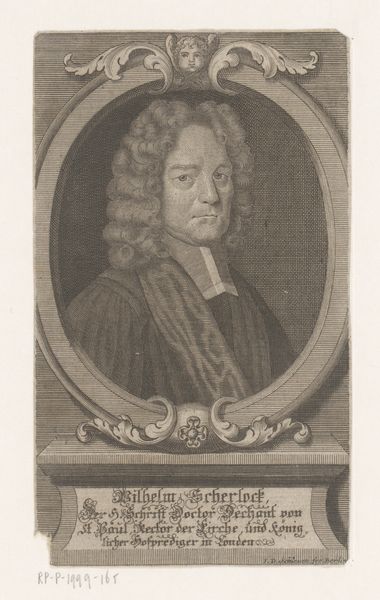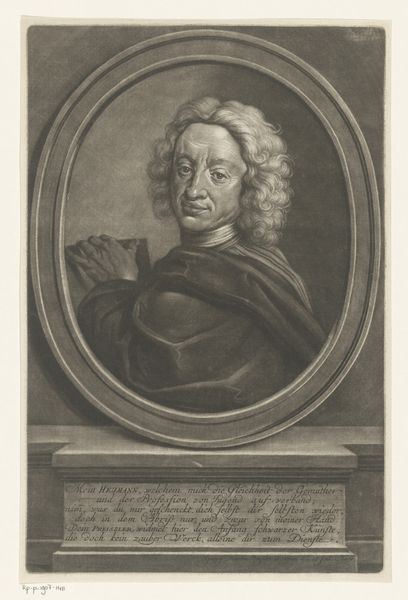
print, metal, paper, engraving
#
portrait
#
baroque
# print
#
metal
#
paper
#
line
#
history-painting
#
engraving
Dimensions: height 315 mm, width 271 mm
Copyright: Rijks Museum: Open Domain
Curator: Looking at this portrait of Gustav Georg Zeltner, engraved sometime between 1682 and 1725 by Christoph Weigel, the first thing that strikes me is the incredible detail achieved through the engraving process. The way lines are used to create depth and texture… it’s fascinating. Editor: Yes, I see what you mean! It's amazing that they could create this level of detail using metal and paper. What’s your take on how the materials themselves influence our reading of this portrait? Curator: That’s a great question. Engraving, unlike painting, demands precision, and this very process can dictate how we perceive social standing. The permanence implied by metal suggests something lasting, a legacy meticulously etched into a plate and transferred onto paper for widespread distribution. Consider the economics involved; the production of multiple prints democratizes the image, making it accessible to a wider audience than an original painted portrait might be. Editor: That’s interesting. So, the choice of printmaking could be seen as a way to engage with a larger public? I wouldn’t have immediately considered the social implications of choosing print over paint. Curator: Precisely! The very act of producing and disseminating these prints involves workshops, apprentices, and networks of distribution – each impacting its social influence and challenging established concepts about originality. And look at the text inscribed at the bottom – what do you make of it? Editor: Well, it seems to detail his title and position as a pastor, and that makes me think the prints were commissioned to enhance and advertise his status in the community? Curator: Exactly. It's not just a portrait but a manufactured artifact actively participating in shaping his public image through very intentional production and circulation of his likeness. Considering the labor, materiality, and purpose gives the artwork an alternative meaning to other art of the time. Editor: Wow, I hadn’t thought of it that way. The focus on the process and materials really opens up a whole new dimension of understanding! Curator: Indeed, it's a shift from merely observing aesthetics to recognizing art's involvement in societal dynamics.
Comments
No comments
Be the first to comment and join the conversation on the ultimate creative platform.
